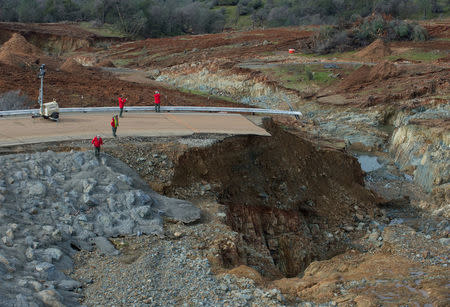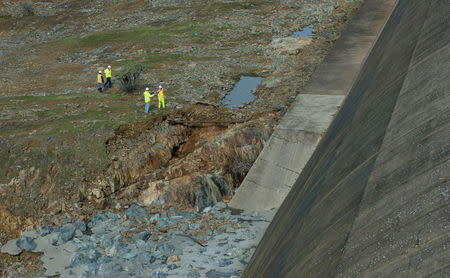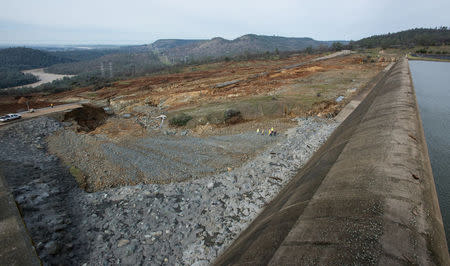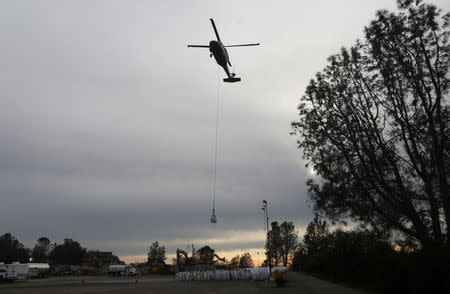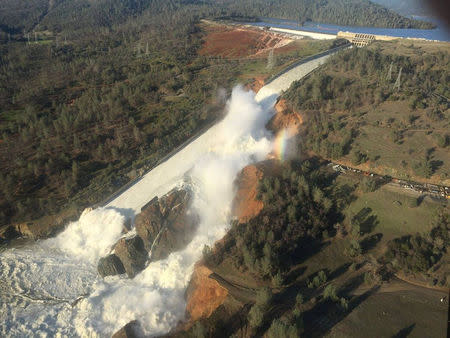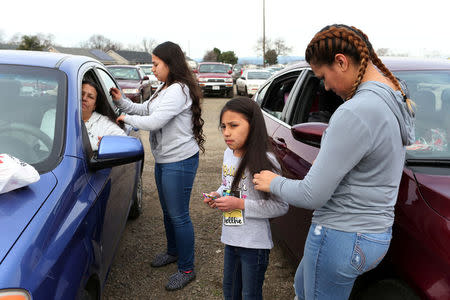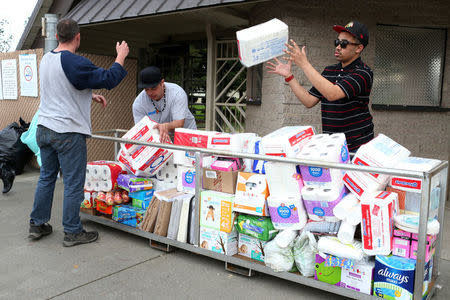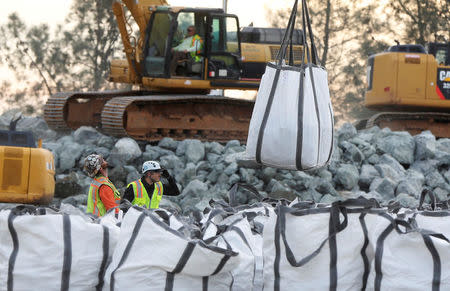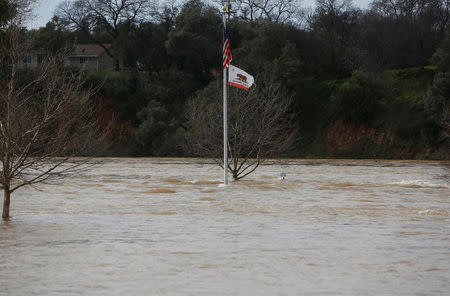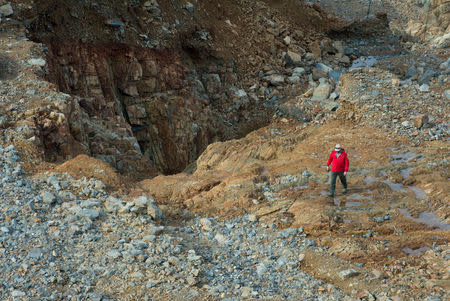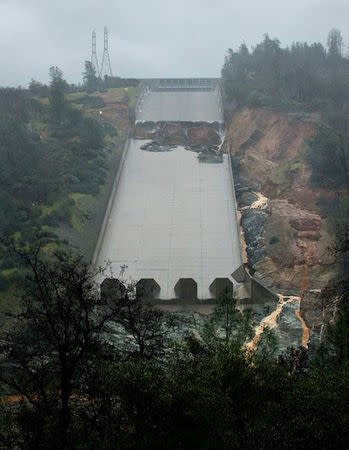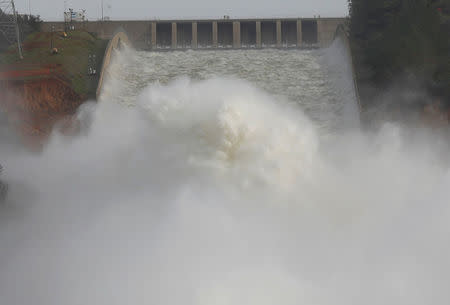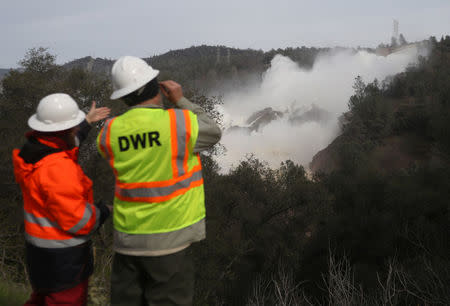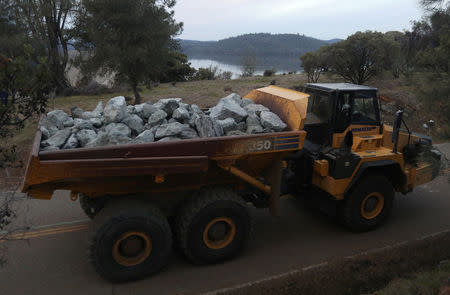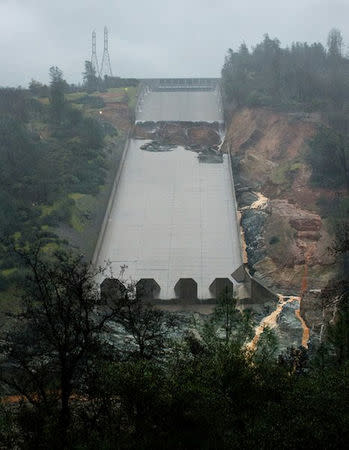No return home in sight for thousands of Californians fleeing dam
By Deborah M. Todd
OROVILLE, Calif. (Reuters) - Nearly 200,000 Californians faced an indefinite stay in shelters on Tuesday as engineers worked around the clock to fix the United States' tallest dam before more rain arrives.
After what looks to be the wettest winter in Northern California following years of drought, more rain was forecast for as early as Wednesday and through Sunday, according to the National Weather Service.
Hundreds of families were camped out in cars and tents at Silver Dollar Fairgrounds in Chico, about 25 miles (40 km) northwest of Oroville.
"I left everything in my house. I've got a four-bedroom, two-bathroom house and I don't know what's going to happen to it," said William Rigsbay, 53, of Thermalito.
Related Video:
For more news videos visit Yahoo View, available now on iOS and Android.
Crews were working to shore up an emergency overflow channel at the Lake Oroville Dam, using helicopters and heavy construction equipment to place rock and other materials into areas of erosion, the California Department of Water Resources said.
The agency said the reservoir was draining at a rate that should allow it to absorb inflows from forecasted rain. The repair work was being done on the backup channel, known as the emergency spillway, which allows water out of the reservoir when capacity is reached. The primary spillway is also damaged, but it is still useable, officials said.
Water authorities had been relieving pressure on the dam through the concrete-lined primary spillway last week, but lake levels rose as storm water surged in and engineers moderated use of the damaged primary spillway. The rising water topped over the earthen backup spillway, which has a concrete top, for the first time in the dam's 50-year history over the weekend.
When the emergency spillway showed signs of erosion, engineers feared a 30-foot-high section could fail, and about 188,000 people were ordered to evacuate their homes in the Feather River valley below the dam, 65 miles (105 km) north of Sacramento. Both spillways are next to the dam, which itself is sound, engineers say.
As of Tuesday, officials still had yet to indicate when it would be safe for people to go home.
Storefronts and strip malls were shuttered and traffic was light along California's state highway 99 near Oroville. The packed parking lot of a 7-Eleven convenience store in nearby Live Oak was one of the few signs of life along the route, other than emergency personnel. TRUMP ASKED TO DECLARE EMERGENCY
Authorities say they had averted the immediate danger of a catastrophic failure at the dam that could unleash a wall of water three stories tall on towns below.
"We're doing everything we can to get this dam in shape that they can return and they can live safely without fear. It's very difficult," California Governor Jerry Brown told a news conference on Monday evening.
On Monday, Brown sent a letter to U.S. President Donald Trump asking him to issue an emergency declaration, which would open up federal assistance for the affected communities, after an emergency overflow channel appeared on the brink of collapse.
White House spokesman Sean Spicer on Tuesday told reporters the administration would "make sure we are doing everything we can to attend to this matter" and "help people who have been impacted," adding that the dam was evidence that the United States needed to overhaul its infrastructure, one of Trump's domestic goals. In the meantime, people living beneath the dam were homeless.
Yolanda Davila, 62, of Thermalito, ended up at the Silver Dollar Fairgrounds in Chico, one of only five in the area taking people with pets. She left home without medicine and dog food in the rush to find shelter before the evacuation deadline.
She said areas such as Sacramento had been issued flood warnings earlier in the week and that authorities should have warned residents near Oroville much sooner.
"We didn't have a plan. All we knew is to head north toward Chico," Davila said. "If I knew we had to get out earlier I would have went to the Bay area."
The earth-filled dam is just upstream and east of Oroville, a town of about 16,000 people. At 770 feet (230 meters) high, the structure, built between 1962 and 1968, is more than 40 feet taller than the Hoover Dam. (Additional reporting by Sharon Bernstein in Sacramento, Brendan O'Brien in Milwaukee and Susan Heavey in Washington; Editing by Daniel Trotta, Louise Ireland and Lisa Shumaker)
